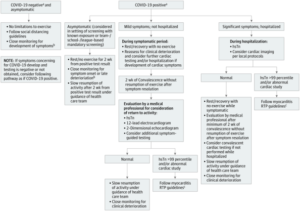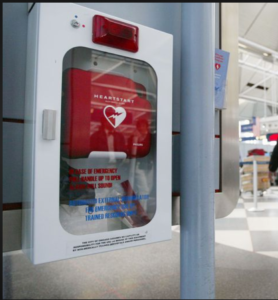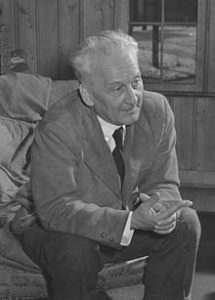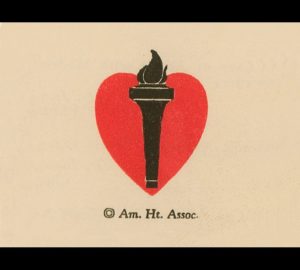Advancing Cardiovascular Health for All
Finally, some excellent news in a year ravaged by innumerable tragedies, the first Black Indian American woman, Kamala Harris, is vice president-elect of the United States, and the American Heart Association has made a commitment to advance cardiovascular health for all-; what a great start to November 2020. I got to attend the American Heart Association’s news conference on the organization’s Call to Action: Structural Racism as a Fundamental Driver of Health Disparities, and unlike many of the committee, workgroup, and taskforce meetings I have attended or the emails and newsletters I have read since the newfound interest in structural racism, this felt real.
The American Heart Association’s Impact Goal read: As champions for health equity, by 2024, the American Heart Association will advance cardiovascular health for all, including identifying and removing barriers to health care access and quality. What struck me was the emphasis on structural racism being a major cause of poor health and premature death. Many of the other meetings I sat in on, you know, the committees, the task forces, and the workgroups, rarely acknowledged structural racism as the root cause. We cannot fix healthcare until we acknowledge that structural racism has contributed to the grave inequities in medicine.
One of the saddest things to me is that marginalized individuals may not even be aware that they are recipients of disparate care. One of my best friend’s uncles, a Black man, was turned away from an emergency department with a new diagnosis of diabetes and unrelenting nausea with some paperwork to apply for insurance coverage and died of a massive myocardial infarction at home. The patients we turn down for heart transplant or left ventricular assist devices because of lack of financial security- souls that will haunt me forever. The Black non-English speaking man who presented to an emergency department with acute myocardial infarction and then delayed in his care led to his death. I read these statistics in medical journals and saw stories on television, but when I started witnessing the injustices firsthand and became the go-to person for my Black friends who wanted assurance that their parents, grandparents, aunts, uncles, and they themselves were receiving “good” care (oftentimes they were not), I became even more determined to do my part in dismantling these oppressive systems.
And just so we are clear, dismantling structural racism does not mean adding Black and Latinx members to a committee, for example, that continues to be led by individuals perpetuating oppressive systems; it means removing the oppressors and replacing them with individuals committed to driving change. Being part of the change means looking around the spaces you are in and recognizing what the problems are, and fixing them. Everyone is responsible. Until we address societal racism, we will never address inequities in medicine. Expecting a patient who is a single, working mother, who lives in a food desert, and who did not have the privilege of going to a top-rated public school to be successful with the same tools provided an executive at a Fortune 500 company is ludicrous. We must provide each patient with the tools that will contribute to their success, but ideally, no provisions would be necessary if we lived in a just society. Justice is the overarching goal.
The highlights of the American Heart Association’s advisory are direct- 1. The ascertainment that structural racism is a current and pervasive problem, 2. The acknowledgment that structural racism is real and produces adverse effects, and 3. The burdens of mitigating the impact of structural racism is a shared responsibility. Profound. All hands on deck; the individuals that deny the pervasiveness of structural racism, and it is the root cause of healthcare inequities must be phased out. Additionally, the American Heart Association listed key areas to address to eliminate structural racism and its negative effects, including restructuring systems, implementing policies, eliminating inequities, fostering allyship, and supporting research. And allyship does not mean supporting the mission when you are around people passionate about dismantling systemic racism, allyship means looking within your own families, circles, and workplace and driving change. Allyship is not wearing a Black Lives Matter pin on your white coat, kneeling with a White Coats for Black Lives sign, sitting on a diversity and inclusion committee, or Tweeting an article on the late, great Congressman John Lewis; allyship is using your privilege and platform to drive change.
I do not claim to be an expert in racism, far from it, but I do know we each have to play a role in dismantling the oppressive systems that have left Black and Latinx patients without access to quality healthcare. For me, my contribution to driving change is mentoring and sponsoring Black women and men interested in careers in medicine so we can change the face of medicine and secondly, working to eliminate inequity in organ allocation in heart transplant by improving outreach to neglected communities and creating pre-transplant “Bootcamp” programs where, instead of turning a patient down for smoking, for example, providing them with the tools necessary to become an ideal transplant candidate. Just like transplant centers are penalized for excessive mortality, transplant centers should be penalized for not expanding outreach to BIPOC communities.
I want to end with the powerful words of Reverend Dr. Martin Luther King, Jr, may he continue to Rest in Power because I cannot end this better myself- “Of all the forms of inequality, injustice in health care is the most shocking and inhumane.” Physicians, advanced practice providers, scientists, nurses, technicians, administrators, policymakers, and anyone with a stake in healthcare- we have so much work to do, but I remain full of hope.
“The views, opinions and positions expressed within this blog are those of the author(s) alone and do not represent those of the American Heart Association. The accuracy, completeness and validity of any statements made within this article are not guaranteed. We accept no liability for any errors, omissions or representations. The copyright of this content belongs to the author and any liability with regards to infringement of intellectual property rights remains with them. The Early Career Voice blog is not intended to provide medical advice or treatment. Only your healthcare provider can provide that. The American Heart Association recommends that you consult your healthcare provider regarding your personal health matters. If you think you are having a heart attack, stroke or another emergency, please call 911 immediately.”





